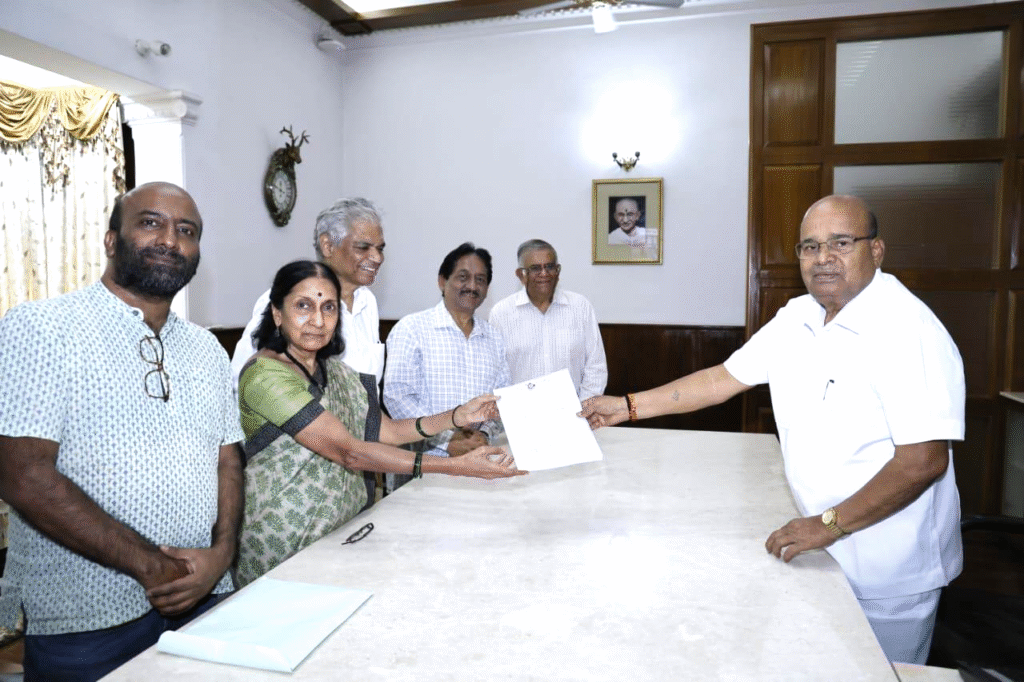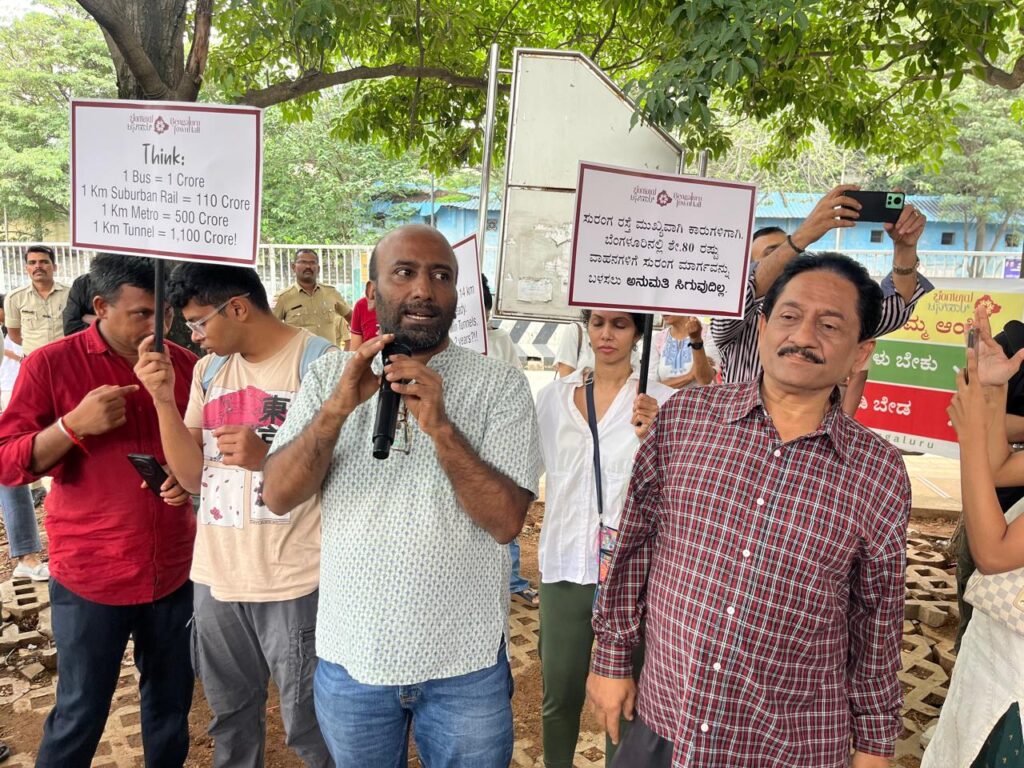
Diluting lake protections now will push Bengaluru into a permanent cycle of waterlogging and scarcity,” activists warn
30 Metres to Zero: Amendment Sparks Alarm Over Bengaluru’s Water Future
Bengaluru, Aug. 25: Even as Bengaluru reels under repeated urban flooding and water crises, citizen groups on Monday urged Governor Thawar Chand Gehlot to withhold assent to the Karnataka Tank Conservation and Development Authority (Amendment) Bill, 2025, which they allege weakens protections for the city’s lakes.
A delegation under the banner Bengaluru Town Hall, including actor-director Prakash Belawadi, activist Sandeep Anirudhan, Kathyayini Chamaraj of Civic Bangalore, Dattatraya Devare of Bangalore Environment Trust, and Rajkumar Dugar of Citizens for Citizens, submitted a memorandum highlighting “constitutional violations” in the bill.
The Bill shifts from a fixed 30-metre buffer to graduated buffer distances based on the size of the waterbody. These norms effectively reduce protection for smaller water bodies to as little as 0 to 3 metres—a dramatic scaling down from the uniform 30 m norm that was previously in effect.
| Waterbody Size | Buffer Zone Proposed |
|---|---|
| Up to 5 guntas (~0.05 acres) | 0 m |
| 5 guntas (0.05 ac) to 1 acre | 3 m |
| 1 acre to 10 acres | 6 m |
| 10 to 25 acres | 12 m |
| 25 to 100 acres | 24 m |
| Over 100 acres | 30 m |
“This amendment favors reckless real estate development, undermines public consultation, and poses a grave threat to water security,” the memorandum stated.

The campaign follows a well-attended public consultation on August 9, where hydrology experts warned of legal and ecological risks, and a citizen protest at Freedom Park on August 17, which drew hundreds.
The city witnessed devastating floods in 2017, 2022, and 2024, largely attributed to shrinking lake networks and blocked stormwater drains. “Diluting lake protections now will push Bengaluru into a permanent cycle of waterlogging and scarcity,” warned activists.
Current Law / Planning Norm: 30 m (as per BDA’s Revised Master Plan 2015).
NGT 2016 Ruling: Increased to 75 m around lakes, plus 50 m for primary drains, 35 m for secondary drains, and 25 m for tertiary drains.
Scientific Recommendations: Minimum 100–300 m needed for full ecosystem protection; at least 75–100 m in urban areas to handle runoff, biodiversity, and flood control.
Bill 2025: Proposes reducing buffer zones from 30 m to much lesser, even zero for small lakes
In short: The amendment takes Bengaluru backward—from the already inadequate 30 m to potentially zero, while science and earlier legal rulings point to a need for 100–300 m. This reduction risks pollution, flooding, biodiversity collapse, and water insecurity for the city.
